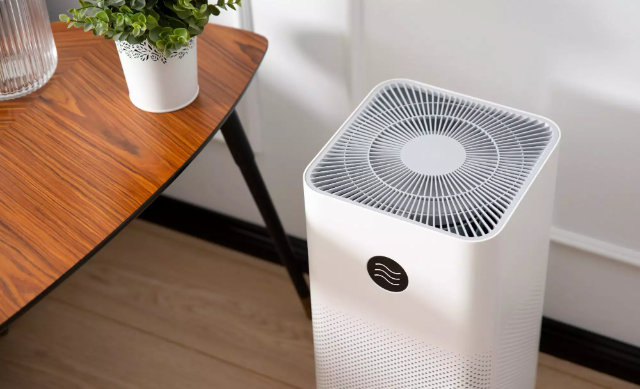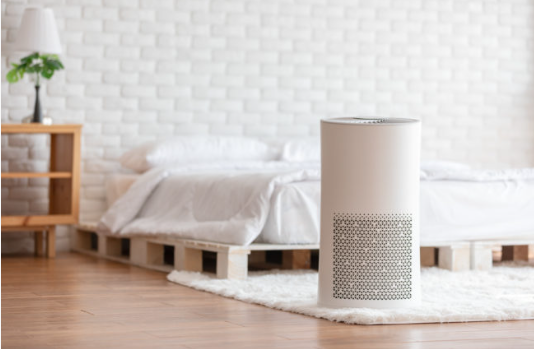So, we always hear that this is the best air purifier that removes pollutants, but what toxins do air purifiers remove? It is commonly read that VOCs and other allergens are effectively eliminated from the air. It does not matter how much care you take care and prevent every source of pollution; it still manages to enter your house.
In this guide, I am writing about the toxins that air purifiers remove and the best air purifiers.
What toxins do air purifiers remove?
According to the Environment Protection Agency, EPA, 90% of the time, an average American stays inside the home, and the air indoors is more polluted, 5 times more than outdoors.

As the sole purpose of an air purifier is removing pollutants from the air, they do their job very accurately by eliminating a significant category of pollutants. Most commonly, air purifiers are mad to deal with
- Dust and allergens
The dust and allergens are microscopic particles more likely to trigger allergies such as respiratory issues and asthma. The air purifier deals with these as the microfibers filter them out to ensure healthy air in the house.
- Volatile organic compounds (VOCs)
These chemicals are emitted as by-products, such as cleaning supplies, paints, and pesticides. These toxic compounds are the reason for causing headaches, dizziness, nausea, and other related health issues.
- Smoke
Smoke is one of the common reasons that cause respiratory issues, whether passively or by other means. The sources of smoke are not only cigarettes; there are many other reasons, too, such as automobiles, cars, chimneys, wildfires, etc.
- Pollen
With the seasonal change, you may feel irritation in the throat or on the skin. The pollen from trees, grasses, and weeds can cause allergic reactions and respiratory problems.
- Pet dander
Almost every household has pets, meaning you have a lot of pet hair floating in the air and sitting on your furniture. This creates allergic reactions and respiratory problems.
Dander from pets such as cats and dogs can cause allergic reactions and respiratory problems.
- Mold and mildew
Mold and mildew grow in damp and moist areas. It may look like the molds only damage the wall, but the fungi release spores in the air that trigger allergic reactions.
As per my suggestion, the best air purifier for mold is Austin Air Purifier. Read the full review: Which Austin air purifier is best?
Or for more options, continue reading: Best air purifier for molds
- Bacteria and viruses
Air purifiers with UV-C lights or other germicidal technology can kill these microorganisms and prevent the spread of illnesses.
In a nutshell, all of these pollutants are eliminated with the help of one powerful air purifier that either has a single or different stage filter for cleaning the air.
Best Air Purifier for Allergens
Almost every brand claim to be the best air purifier for allergens, but personally, I prefer
Leviot Air Purifier

Specification
- Dimensions: 10.79 x 10.79 x 20.47 inches
- Weight: 12.79
- Coverage: 403 ft. 5 times, 990 ft. 2 times an hour
- Filtration: 3-stage filtration; Pre-filters, HEPA, and Activated Carbon
- Noise level: 24 dB
- Other functions: hands-free control, ALEXA/GOOGLE assistant
- Convenience: Auto-Mode
For more options, continue reading Best Air Purifier for Allergies.
Other Common Air Pollutants that are captured by air purifiers
The mentioned air pollutants are not only the reason; there are other factors for air pollution. This includes gases, particles, and or other biological molecules. These substances are harmful to health.
These other common air pollutants are
- Carbon monoxide (CO)
Carbon monoxide is odorless and produced by combustion or by burning coal. They are more likely to cause dizziness and headaches, in some cases, throat itchiness, and death at high exposures.
- Nitrogen oxides (NOx) and Sulfur Dioxide SO2
Nitrogen oxide gas is one of the key sources of producing smog and acidic rain. It forms by the combustion of different fuels leading to other health issues.
- Ozone (O3):
This gas is formed by the reaction of sunlight with other air pollutants and can cause respiratory problems, especially in people with asthma.
- Volatile organic compounds (VOCs):
These are chemicals emitted as by-products, such as cleaning supplies, paints, and pesticides. Exposure to VOCs can cause headaches, dizziness, and other health problems.
- Lead (Pb):
This metal can be found in older paints and gasoline and can cause neurological problems and developmental issues, especially in children.
What are the Sources of air pollutants?
Anything can be a source of air pollution, even you. However, the most common sources are
- Commute and transportation of vehicles that emits PM pollutants, NOx, and SO2.
- Industrial and factory power plants can release various pollutants into the air.
- Fertilizers and livestock that release ammonia and form PM that leads to respiratory issues.
- Household cleaning supplies and pesticides in the air.
- Natural sources are also the reason for causing air pollutants.
What else causes pollution, read about more sources: Why is my room still dusty with air purifier?
***
All these air pollutants are captured and eliminated by the air purifiers specified with their respective pollutants. However, the powerful air purifier is designed with multi-layers for the ultimate cleaning process. They are classified as
Types of air purifiers
Different air purifiers work on different principles with different technology.
- HEPA Air Purifier
HEPA filter, High Efficiency Particulate Air are made with microfibers that can capture pollens, dust, pet dander, etc. from air. The tightly knitted woven fiber traps the particles properly without letting them pass though.
Shop your favorite product here: Best HEPA Air Purifier
- Activated carbon filters
The activated carbon filters are pores that absorb the chemical, gases, and odors from the air and limit their release in the air.
The porous structure of this filter captures the gas and other chemical pollutants, preventing them from circulating in the air.
You can buy the product from here: Best Activated carbon filters
- Ultraviolet germicidal irradiation (UVGI)
UVGI technology uses ultraviolet light to kill bacteria and viruses in the air. When the air passes through the air purifier, it is screened with the UV-C light the kills and damage the microorganism, preventing them form reproduction.
- Electrostatic precipitators
The electrostatic precipitator uses electric charge that captures the particles present in the air. As air passes through the purifier, the charged particles are attracted to oppositely charged plates, where they are trapped and removed from the air.
- Ionic air purifiers:
Ionic air purifiers use charged ions to attract and remove pollutants from the air. As air passes through the purifier, negatively charged ions are released, which attach to positively charged particles in the air.
This makes the particles heavier by attaching with them so they do not float in the air and settle on the furniture instead.
Every air purifier further has its own advantages and disadvantages, however, mostly they are beneficial for removing their specific type of pollutant (if work with a single filter). Make sure to select the one that caters to your need solely.
Frequently Asked Question | What toxins do air purifiers remove?
- How do air purifiers remove mold and mildew?
The mold and mildew grow in damp and moist areas, usually where there is seepage. Air purifiers with HEPA filters can remove mold spores from the air. Some air purifiers also use UVGI technology to kill mold and other microorganisms.
- How do air purifiers remove tobacco smoke?
Air purifiers with activated carbon filters can effectively remove tobacco smoke from the air by adsorbing the chemicals and odors associated with smoking. Some air purifiers also use HEPA filters to remove the particulate matter in cigarette smoke.
Conclusively, What toxins do air purifiers remove
In conclusion, air purifiers are essential in removing various toxins from the air that are of different kinds and sources. These toxins include volatile organic compounds (VOCs), particulate matter (PM), mold and mildew, and tobacco smoke. These toxins can be cleared using different air purifiers, such as HEPA filters, activated carbon filters, ultraviolet germicidal irradiation (UVGI), electrostatic precipitators, and ionic air purifiers to be effectively removed from indoor air.
Hence, it is essential to use air purifiers to improve indoor air quality and reduce the risk of health problems associated with exposure to harmful toxins.
You can continue reading for the best air purifier and other related queries to the air purifier.
